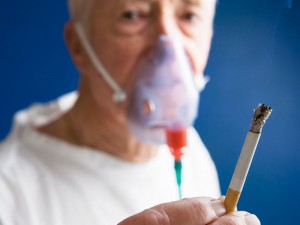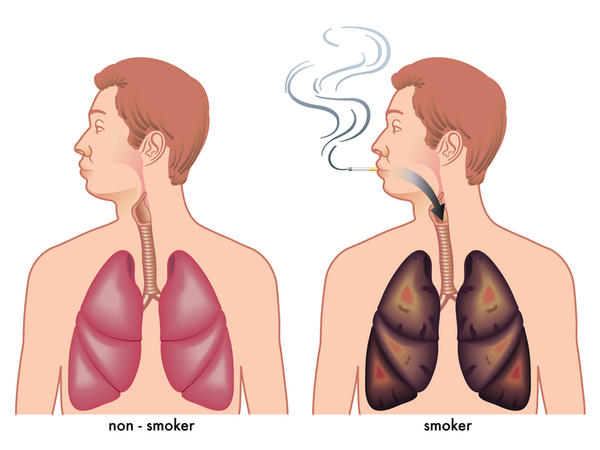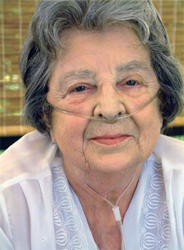 COPD, or chronic obstructive pulmonary PULL-mun-ary disease, is a progressive disease that makes it hard to breathe. “Progressive” means the disease gets worse over time. COPD can cause coughing that produces large amounts of mucus a slimy substance, wheezing, shortness of breath, chest tightness, and other symptoms. Cigarette smoking is the leading cause of COPD. Most people who have COPD smoke or used to smoke. Long-term exposure to other lung irritants—such as air pollution, chemical fumes, or dust—also may contribute to COPD.
COPD, or chronic obstructive pulmonary PULL-mun-ary disease, is a progressive disease that makes it hard to breathe. “Progressive” means the disease gets worse over time. COPD can cause coughing that produces large amounts of mucus a slimy substance, wheezing, shortness of breath, chest tightness, and other symptoms. Cigarette smoking is the leading cause of COPD. Most people who have COPD smoke or used to smoke. Long-term exposure to other lung irritants—such as air pollution, chemical fumes, or dust—also may contribute to COPD.
Tag: COPD
Leading Cause of Emphysema is Smoking
 Emphysema occurs when the air sacs in your lungs are gradually destroyed, making you progressively more short of breath. Emphysema is one of several diseases known collectively as chronic obstructive pulmonary disease (COPD). Smoking is the leading cause of emphysema.
Emphysema occurs when the air sacs in your lungs are gradually destroyed, making you progressively more short of breath. Emphysema is one of several diseases known collectively as chronic obstructive pulmonary disease (COPD). Smoking is the leading cause of emphysema.
As it worsens, emphysema turns the spherical air sacs — clustered like bunches of grapes — into large, irregular pockets with gaping holes in their inner walls. This reduces the surface area of the lungs and, in turn, the amount of oxygen that reaches your bloodstream.
Emphysema also slowly destroys the elastic fibers that hold open the small airways leading to the air sacs. This allows these airways to collapse when you breathe out, so the air in your lungs can’t escape. Treatment may slow the progression of emphysema, but it can’t reverse the damage.
What is COPD?
 Chronic obstructive pulmonary disease COPD refers to a group of lung diseases that block airflow as you exhale and make it increasingly difficult for you to breathe. Emphysema and chronic asthmatic bronchitis are the two main conditions that make up COPD. In all cases, damage to your airways eventually interferes with the exchange of oxygen and carbon dioxide in your lungs. COPD is a leading cause of death and illness worldwide. Most COPD is caused by long-term smoking and can be prevented by not smoking or quitting soon after you start. This damage to your lungs can’t be reversed, so treatment focuses on controlling symptoms and minimizing further damage.
Chronic obstructive pulmonary disease COPD refers to a group of lung diseases that block airflow as you exhale and make it increasingly difficult for you to breathe. Emphysema and chronic asthmatic bronchitis are the two main conditions that make up COPD. In all cases, damage to your airways eventually interferes with the exchange of oxygen and carbon dioxide in your lungs. COPD is a leading cause of death and illness worldwide. Most COPD is caused by long-term smoking and can be prevented by not smoking or quitting soon after you start. This damage to your lungs can’t be reversed, so treatment focuses on controlling symptoms and minimizing further damage.
